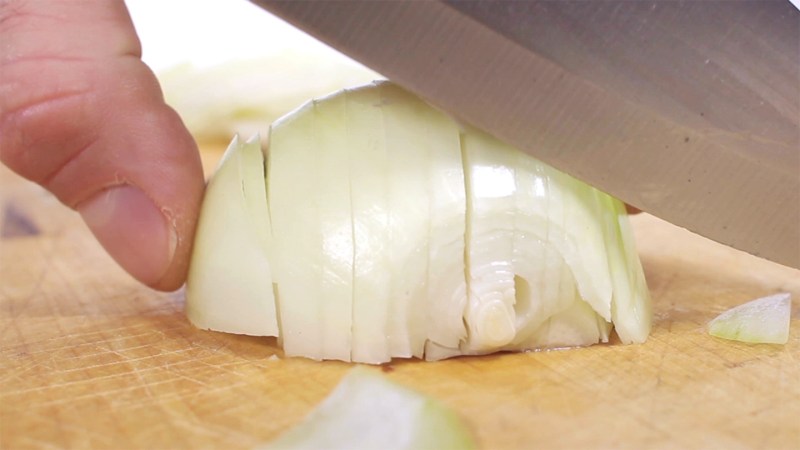New research has revealed that using sharper knives can significantly reduce the tears associated with cutting onions. Published on October 21, 2023 in the Proceedings of the National Academy of Sciences, the study outlines how the technique not only enhances the cooking experience but could also provide insights into how pathogens spread.
The culprit behind the tears is a chemical compound known as propanethial S-oxide. When an onion is cut, its cells rupture, triggering a reaction that releases this compound into the air. The tiny droplets bind to sensory nerves in the eyes, causing irritation and resulting in tears.
Navid Hooshanginejad, a physicist at SharkNinja in Needham, Massachusetts, conducted this research while studying at Cornell University. The idea for the study came to him during a cooking session, where he noticed the droplets from the onion’s pungent juices landing on his hands. He pondered, “What if these drops flew high enough to make me cry?”
To explore this question, Hooshanginejad and his team conducted experiments using a 10-pound bag of onions, high-speed cameras, and various knife blades to measure the amount of tear-inducing droplets produced during cutting. They even constructed a miniature guillotine to analyze the airborne journey of the spray.
The researchers discovered that cutting onions with blunt knives requires more force, resulting in more cells being crushed and, therefore, a greater release of the irritating compound. Their findings indicated that quick cuts with dull knives could send liquid beads soaring nearly 40 meters high—almost half the height of a giant sequoia. In contrast, using sharper blades allowed for more controlled cuts, keeping the released droplets from reaching eye level.
Hooshanginejad explained the mechanics behind this phenomenon, likening it to the behavior of a water balloon. According to Jim Wilking, a physicist at the Mayo Clinic in Rochester, Minnesota, “If you pop a water balloon by using a needle, you don’t need to apply much pressure. But if you come in with your finger, you’re essentially pressurizing the elastic shell in order to pop it.” This analogy illustrates how increased pressure can propel onion juice further into the air.
The implications of this research extend beyond the kitchen. Hooshanginejad noted that understanding how droplets disperse could help scientists gain insights into the spread of pathogens in various biological systems.
Through this investigation, researchers have not only made cutting onions a less tearful task but have also contributed to a broader understanding of fluid dynamics and its potential applications in health and science. The study emphasizes how a simple change in kitchen technique can have far-reaching consequences.
